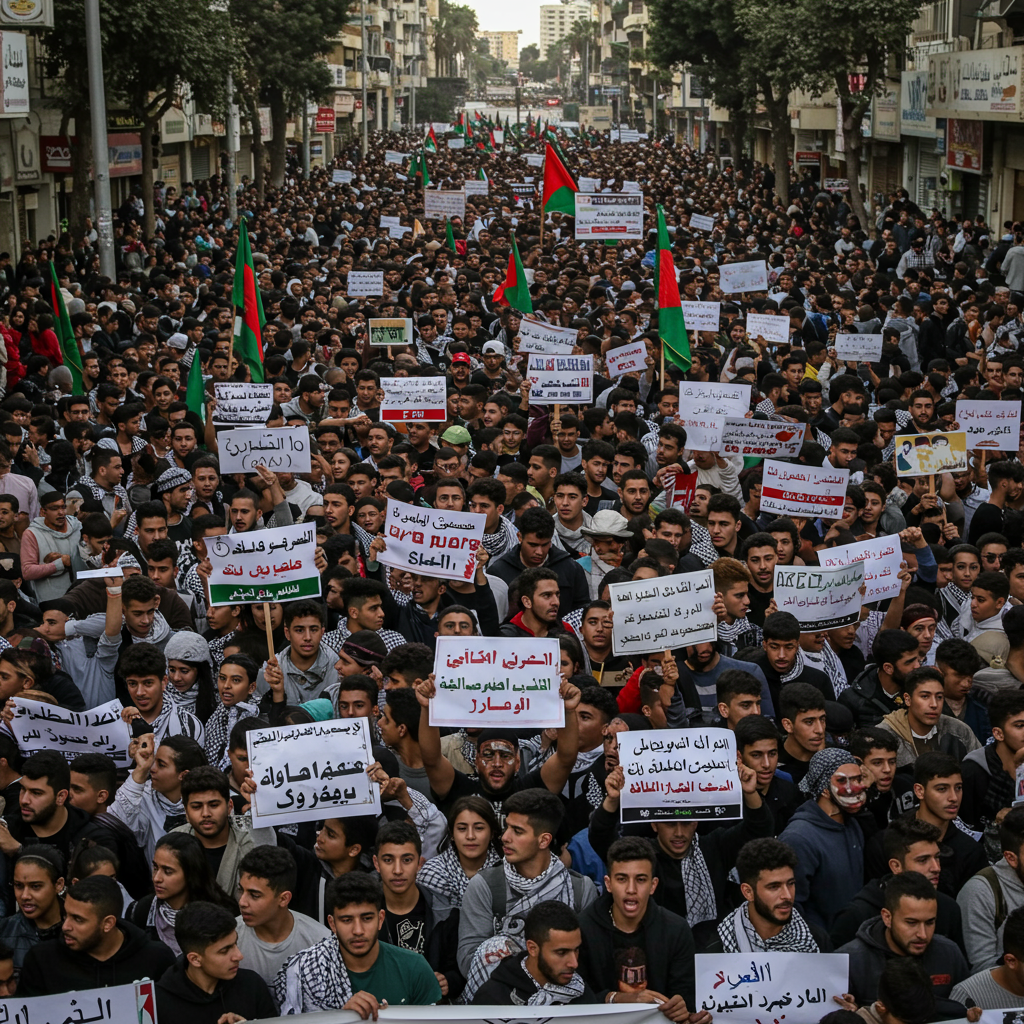Intense Israeli military strikes across the Gaza Strip have tragically resulted in the deaths of at least 81 Palestinians and left over 400 injured within a recent 24-hour period ending midday Saturday, according to figures released by the Hamas-run health ministry. This surge in violence underscores the dire humanitarian situation gripping the enclave, even as international efforts to broker a ceasefire continue. The latest casualties add to a grim toll, pushing the total number of reported deaths in Gaza since October 2023 past 56,000, according to the same ministry, though these figures do not differentiate between civilians and combatants.
Civilian Areas Bear the Brunt of Recent Attacks
Several specific incidents highlighted the severe impact of the strikes on civilian populations, including those already displaced by the conflict. One particularly devastating strike occurred near the Palestine Stadium in Gaza City. This area was being used to shelter displaced families living in makeshift tents. According to staff at Al-Shifa hospital and witnesses, the attack killed at least 11 people, including children.
Witnesses described a scene of chaos and desperation following the strike. The area, previously filled with tents, was left buried under sand and debris. Survivors and emergency responders resorted to digging through the sandy ground with their bare hands and spades in frantic attempts to find bodies trapped beneath. One witness questioned the targeting, stating the area housed only civilians, not militants.
Strikes Hit Shelters and Homes
Further reports indicated strikes causing multiple fatalities in other densely populated areas. In the al-Mawasi area, often designated as a safer zone, 14 people were reportedly killed. Relatives shared heart-wrenching accounts, including the death of three children and their parents who were asleep when their apartment block and tent were hit. A grandmother, recounting the loss, emotionally questioned the justification for targeting sleeping children.
Saturday afternoon saw more casualties in the Tuffah neighbourhood near Jaffa School. Hundreds of displaced Gazans had sought refuge at the school. An air strike in this vicinity killed at least eight people, including five children, according to the health ministry. Witnesses like Mohammed Haboub described losing nephews, his father, and neighbours’ children in the attack, emphasizing that the victims were civilians.
The intensity of the strikes and the resulting destruction have severely hampered rescue operations. Ambulance and civil defence crews have faced immense difficulties reaching victims trapped under rubble or on damaged roads. Movement in some affected areas has become nearly impossible, delaying crucial aid and medical assistance.
Military Context and Conflicting Narratives
The Israeli military (IDF) typically states its operations target Hamas infrastructure and operatives. In a statement issued Saturday evening, the IDF announced it had killed Hakham Muhammad Issa al-Issa in the Sabra area of Gaza City the previous day. The IDF identified al-Issa as a senior figure within Hamas’s military wing, a founding member, a member of its general security council, and a key planner of the October 7, 2023, attack on Israel.
The current intense bombardment of Gaza was initiated by Israel following the October 7 attack led by Hamas. That assault resulted in the deaths of approximately 1,200 people in Israel and the taking of 251 hostages. The conflict has since escalated dramatically, leading to the high number of casualties reported by the Gaza health ministry. While Israel disputes the total figures and asserts a significant number are Hamas fighters, international bodies and other reports, like a Lancet paper cited in one summary, suggest the true overall toll could be even higher than the health ministry’s count due to difficulties recovering bodies.
Adding another layer of concern, recent reports from health officials and witnesses detail incidents where Palestinians have been shot and wounded while attempting to access food distribution sites. Notably, attacks have occurred near the Netzarim Corridor, which divides north and south Gaza, where people gather daily for aid, sometimes from organizations like the US- and Israeli-backed Gaza Humanitarian Foundation. Witnesses describe intense gunfire from tanks, aircraft, and drones targeting crowds at these aid points. The Israeli military has stated it is investigating incidents where civilians were harmed near aid locations, claiming suspects endangered forces, but these attacks are becoming increasingly frequent.
Elusive Ceasefire Amid Political & Diplomatic Maneuvers
The renewed intensity of fighting comes amidst persistent, yet stalled, negotiations for a ceasefire and a hostage release deal. US President Donald Trump recently expressed optimism, claiming a truce could be reached “within the next week” and that the US is actively working on the situation. Qatari mediators, heavily involved in brokering potential agreements, have voiced hope that US pressure could help achieve a breakthrough, potentially building on momentum from a recent truce between Israel and Iran.
However, the path to a lasting ceasefire in Gaza remains fraught with challenges. A previous two-month ceasefire, which began in January, collapsed in March after Israel resumed strikes, failing to progress beyond its initial stage. The planned second stage of that earlier deal included a permanent ceasefire, the exchange of remaining live hostages for Palestinian prisoners in Israel, and the full withdrawal of Israeli forces from Gaza.
Senior Hamas officials have confirmed that mediators have intensified their efforts for a new deal involving a ceasefire and hostage release. Despite this, negotiations with Israel reportedly remain stalled. Disagreements persist not only on the core terms but also on details like aid distribution mechanisms and the positioning of Israeli forces during a potential truce.
Internal Political Hurdles in Israel
The prospect of a ceasefire deal has also exposed deep political divisions within Israel. While thousands rallied in Tel Aviv calling for a deal to free the remaining hostages and end the fighting, key figures within the Israeli government have voiced strong opposition to potential terms. Reports suggest a proposed 3-stage deal, brokered by the US, Qatar, and Egypt, was close to being finalized but faced delays, with Prime Minister Benjamin Netanyahu initially accusing Hamas of backtracking – an accusation Hamas denies.
Hardline coalition partners, such as Security Minister Itamar Ben-Gvir and Finance Minister Bezalel Smotrich, vehemently oppose any deal that doesn’t guarantee complete victory over Hamas. Ben-Gvir has threatened to leave the government if a deal involving the release of Palestinian prisoners and withdrawal from areas like the Philadelphi Corridor is ratified, potentially leaving Netanyahu with a minority government. Conversely, opposition leader Yair Lapid has offered Netanyahu a “safety net” of support to pass a deal, underscoring its national importance over political rivalries. The political maneuvering highlights the complex domestic landscape influencing ceasefire prospects. Hamas, for its part, maintains its willingness to release all hostages in exchange for a complete end to the war, a condition Netanyahu rejects, insisting the conflict will only end when Hamas is disarmed and exiled.
Humanitarian Aid Remains a Critical Bottleneck
Beyond the fighting and political wrangling, the humanitarian situation in Gaza is rapidly deteriorating. Aid delivery remains severely restricted. Before the October 7th attack, around 500 aid trucks entered Gaza daily. This plummeted to an average of only nine daily afterwards and currently averages around 51 – still drastically short of needs. The World Food Programme reports only providing a third of necessary rations. Essential infrastructure like bakeries have stopped functioning due to lack of fuel.
A proposed ceasefire deal is reported to include provisions for a significant increase in aid, allowing up to 600 trucks daily, including fuel – described as a critical “lifeline” for the 2.2 million people reliant on assistance. The ongoing strikes, particularly those reportedly targeting civilians seeking aid, only worsen the already desperate conditions, turning humanitarian corridors into what some describe as “killing grounds.” The lack of electricity for over a year and a half also adds immense hardship, leading people to risk their lives simply to charge devices in makeshift areas, which have also faced strikes.
Frequently Asked Questions
What areas of Gaza were hit in the recent strikes causing mass casualties?
Recent Israeli strikes causing significant casualties hit several specific locations in Gaza. According to reports, areas affected include near the Palestine Stadium in Gaza City, where tents housing displaced people were struck, resulting in multiple deaths, including children. The al-Mawasi area also saw strikes on an apartment block and tent, reportedly killing 14 people. Additionally, the Tuffah neighbourhood near the Jaffa School, sheltering hundreds of displaced residents, was hit, killing at least eight people, including five children.
Which international parties are currently mediating Gaza ceasefire talks?
Several international parties are actively involved in mediating ceasefire talks between Israel and Hamas. The primary mediators mentioned in connection with recent efforts are the United States, Qatar, and Egypt. These nations have been working to bridge the gaps between the negotiating parties, attempting to achieve an agreement that would involve a cessation of hostilities and the exchange of hostages held by Hamas for Palestinian prisoners in Israel.
How do recent strikes exacerbate the humanitarian crisis and aid challenges in Gaza?
Ongoing strikes severely worsen the humanitarian crisis in Gaza by causing further death and injury among a vulnerable population, including many displaced persons sheltering in precarious conditions. The attacks damage infrastructure and make movement difficult, hindering emergency and aid crews from reaching victims and delivering supplies. Furthermore, reports of strikes targeting areas where civilians gather for aid, such as near the Netzarim Corridor, add extreme danger to the already desperate attempts by Palestinians to access insufficient food and essential supplies, underscoring the dire aid challenges.
The situation in Gaza remains volatile as military actions continue and diplomatic efforts navigate complex political landscapes. The high civilian death toll from recent strikes highlights the urgent need for de-escalation and effective humanitarian access.




